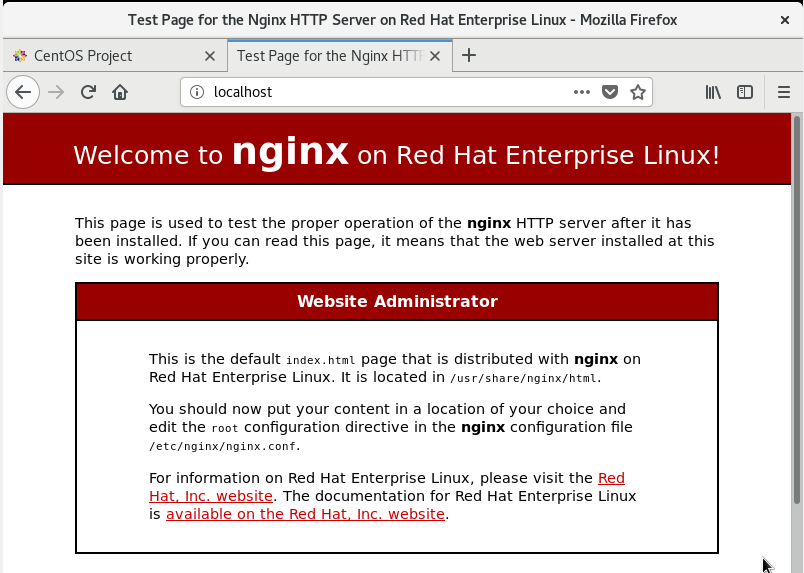Open Source Web Servers Your Guide
Open source web servers are the unsung heroes of the internet, powering countless websites and applications. From simple blogs to complex e-commerce platforms, these open-source solutions provide a robust and flexible foundation for online presence. This guide dives deep into the world of open-source web servers, exploring their architecture, installation, security, and optimization.
We’ll examine the key features and benefits of popular open-source servers like Apache and Nginx, comparing their performance, security, and scalability. You’ll gain a practical understanding of how these servers work, from the fundamental components to the intricate configurations. We’ll also discuss security considerations and optimization strategies to ensure your server runs smoothly and securely.
Introduction to Open Source Web Servers
Open source web servers are software applications that handle incoming requests from web browsers and deliver the requested web pages. They act as intermediaries between clients (users) and web servers, facilitating the smooth operation of websites. This crucial role is fundamental to the modern internet, enabling users to access information and resources across the globe.These servers are vital components of any website’s infrastructure, translating user requests into data retrievals and delivering responses.
They are a key aspect of how the internet functions, facilitating communication and information sharing on a global scale.
Key Characteristics of Open Source Web Servers
Open source web servers are characterized by their availability under permissive licenses, allowing users to modify, distribute, and use the software without significant restrictions. This fosters a collaborative development environment, enabling community contributions and constant improvements. The open-source nature also promotes transparency and accountability, as the code is publicly accessible. This, in turn, enhances security through the identification and resolution of vulnerabilities by a broader community.
Examples of Popular Open Source Web Servers
Apache HTTP Server and Nginx are prominent examples of open source web servers. Apache, a highly versatile server, is renowned for its robust feature set and extensive support. Nginx, on the other hand, is known for its exceptional performance and efficiency, especially in handling high traffic volumes. Lighttpd, a lighter alternative, is particularly suitable for resource-constrained environments.
Open source web servers are fascinating, offering a lot of flexibility and community support. Thinking about the recent photos a nation says a final goodbye to president jimmy carter ( photos a nation says a final goodbye to president jimmy carter ), it struck me how powerful technology can be in capturing and sharing moments in history. Ultimately, open source web servers are a testament to the power of collaboration and innovation in the digital age.
Benefits of Open Source Web Servers
Open source web servers offer several advantages over proprietary alternatives. Cost-effectiveness is a primary benefit, as there are no licensing fees associated with open source software. Furthermore, the open-source nature encourages a large and active community, leading to robust support and a rapid response to security vulnerabilities. The ability to customize and adapt the server to specific needs is another key benefit, empowering users with greater control over their website’s functionality.
Open source web servers are a fascinating area, offering flexibility and cost-effectiveness. Considering the recent news about California union membership hitting an 18-year low, this potentially impacts the workforce’s ability to negotiate for better working conditions , potentially affecting the digital landscape in unforeseen ways. Ultimately, the accessibility of open-source web servers ensures continued innovation in a global digital economy.
Comparison of Key Features
| Feature | Apache | Nginx | Lighttpd |
|---|---|---|---|
| Performance | Generally good, but can be less efficient than Nginx in high-traffic scenarios. | Excellent performance, particularly for handling concurrent connections and static content. | Very efficient and fast, especially for static content delivery, often exceeding Nginx in certain scenarios. |
| Security | Robust security features, but can be more complex to configure. | Highly secure, known for its efficient handling of security threats. | Secure, but with a slightly smaller community support base for security issues. |
| Scalability | Highly scalable through various configurations and modules, accommodating a wide range of traffic loads. | Extremely scalable, designed to handle massive amounts of concurrent connections. | Scalable, but often less resource-intensive compared to Apache or Nginx, making it suitable for smaller to medium-sized applications. |
Architecture and Components
Open source web servers, like Apache and Nginx, power the majority of websites. Understanding their architecture is key to appreciating their efficiency and flexibility. They’re not monolithic entities; rather, they’re intricate systems of interacting components. This section dives into the core structure and functionality of these systems, revealing the magic behind seamless web interactions.The fundamental architecture of an open-source web server revolves around a client-server model.
Clients, typically web browsers, request resources (HTML pages, images, etc.) from the server. The server, in turn, processes these requests, retrieves the requested data, and sends it back to the client. This exchange forms the backbone of the World Wide Web.
Fundamental Server Components
The core components of a web server work in concert to handle incoming requests and deliver responses efficiently. They can be broadly categorized as follows:
- The HTTP Server: This component acts as the primary interface between the client and the server. It receives HTTP requests, interprets them, and forwards them to the appropriate modules for processing. It also handles the formatting and transmission of HTTP responses back to the client.
- The Request Handler: This module parses the HTTP request, extracts the necessary information (e.g., requested resource, method), and passes it to the next component in the chain.
- The Module Manager: This component manages the different modules that are loaded into the server. This allows for dynamic loading and unloading of modules based on the specific needs of the request. This dynamic nature is crucial for handling diverse requests and evolving web applications.
- The Resource Manager: This is responsible for locating and retrieving the requested resource (e.g., a file from the server’s file system or a database). This includes handling caching mechanisms for frequently accessed resources to speed up future requests.
- The Response Handler: This module constructs the HTTP response based on the processed request and retrieved data. It ensures the response is formatted correctly, includes headers, and contains the actual content.
Visual Representation of the Server Architecture
Imagine a pipeline where requests flow from the client to the server. The HTTP server acts as the entry point, receiving and routing requests. The request handler then parses the request. Next, the module manager determines the appropriate modules needed for processing. The resource manager locates and retrieves the data, and the response handler formats the response.
Finally, the response is sent back to the client.
Detailed Roles of Modules
Modules are specialized pieces of code that perform specific tasks within the web server. Different modules handle various aspects of the request-response cycle. For example, authentication modules verify user identities, while security modules protect against malicious requests.
Component Breakdown Table
This table summarizes the components and their roles in handling web requests.
| Component | Function |
|---|---|
| HTTP Server | Receives and interprets HTTP requests; formats and transmits responses. |
| Request Handler | Parses HTTP requests, extracts relevant information, and forwards to other components. |
| Module Manager | Manages loaded modules based on request requirements. |
| Resource Manager | Locates and retrieves the requested resource (e.g., files, databases). |
| Response Handler | Formats the HTTP response, including headers and content. |
Installation and Configuration

Getting an open-source web server up and running involves several crucial steps. From downloading the software to configuring it for multiple websites and ensuring security, each stage is vital for a functional and reliable server. This section details the process, offering a practical guide for setting up a robust web server environment.The installation and configuration of an open-source web server, such as Apache, require careful attention to detail.
Incorrect configurations can lead to vulnerabilities and performance issues. Following a structured approach and understanding the underlying mechanisms is key to successfully deploying and managing the server.
Installing Apache
Installing Apache typically involves downloading the appropriate package for your operating system, unpacking it, and then configuring the server. The specific steps may vary depending on the distribution you’re using (e.g., Debian, CentOS, or Ubuntu). A common approach involves using the package manager provided by your Linux distribution.
- Download the Apache source code or package from the official website. This ensures you have the latest stable version.
- Unpack the downloaded archive, typically using a command like `tar -xvzf apache24.tar.gz` (for a tarball). This creates a directory containing the Apache files.
- Install any necessary dependencies. Apache might depend on other packages for various functions, such as modules for specific tasks. Check the Apache documentation for your system for dependency information.
- Use the package manager (e.g., `apt-get` on Debian/Ubuntu, `yum` on CentOS/RHEL) to install Apache if using a package manager. For example: `sudo apt-get install apache2`.
- Verify the installation by checking the Apache status. A command like `sudo systemctl status apache2` (for systemd) will confirm if the service is running.
Configuring Basic Functionality
Configuring Apache for basic functionality often involves editing configuration files to specify the server’s behavior. The primary configuration file (e.g., `httpd.conf` or `apache2.conf`) dictates various aspects, from listening ports to document root directories.
- Open the main configuration file using a text editor (e.g., nano, vim). Locate the `DocumentRoot` directive. This specifies the directory containing the web pages.
- Change the `DocumentRoot` to the appropriate directory for your website. This typically involves a specific folder on your server where you have placed your website’s files.
- Ensure the `ServerName` directive is set to the correct hostname. This is crucial for identifying the server to clients.
- Save the configuration file and restart the Apache service using commands like `sudo systemctl restart apache2` to apply the changes.
- Access your website in a web browser by entering the server’s address (e.g., `http://your-server-ip`). This verifies the server is running and serving files correctly.
Configuring Virtual Hosts
Virtual hosts allow you to run multiple websites from a single server. This is a common practice for hosting multiple domains. Each virtual host defines a specific configuration for a website.
Open source web servers are fantastic for their flexibility and community support. While delving into the intricacies of these systems, I stumbled across an interesting question about a particular Episcopal Bishop, Marianne Budde. Learning about figures like who is mariann budde episcopal bishop trump is often a fascinating detour, but I’m back on track. Ultimately, open source web servers provide a robust and adaptable foundation for any website.
- Create a new configuration file for each virtual host. These files are typically placed in a dedicated directory (e.g., `/etc/apache2/sites-available`).
- Specify the `ServerName` and `ServerAlias` directives to match the domain name and any aliases for the website. This is essential for resolving requests from clients.
- Define the `DocumentRoot` for each virtual host to point to the respective website’s files.
- Enable the virtual host configuration file by linking it to the `sites-enabled` directory (e.g., `sudo a2ensite mysite.conf`).
- Restart the Apache service for the changes to take effect.
Secure Server Installation and Configuration
Securing the server is paramount. This involves implementing strong passwords, disabling unnecessary modules, and regularly updating software.
- Use strong, unique passwords for all server accounts. Employ a password manager for secure storage and generation.
- Disable any unnecessary modules in Apache to reduce potential attack vectors.
- Keep your server software updated with the latest security patches to address known vulnerabilities.
- Implement a firewall to restrict access to the server only to necessary ports.
- Use HTTPS for all communication to encrypt data exchanged between the server and clients. This ensures secure data transmission.
Security Considerations: Open Source Web Servers
Open source web servers, while offering flexibility and cost-effectiveness, are susceptible to various security vulnerabilities. Understanding these vulnerabilities and implementing robust security measures is crucial to protecting sensitive data and maintaining the integrity of the server. This section explores common threats and practical strategies for securing open source web servers.
Common Security Vulnerabilities, Open source web servers
Open source web servers, like Apache and Nginx, are attractive targets for malicious actors due to their widespread use and potentially known vulnerabilities. These vulnerabilities can stem from various sources, including insecure configurations, outdated software, and poorly written code. Common examples include cross-site scripting (XSS), SQL injection, and remote file inclusion (RFI). These vulnerabilities can lead to unauthorized access, data breaches, and system compromise.
Securing the Server Against Attacks
Implementing strong security measures is paramount for safeguarding open source web servers. This includes employing robust authentication mechanisms, regular updates, and vigilant monitoring. Regular security audits can identify potential weaknesses and address them proactively. A multi-layered approach, combining various security strategies, is often the most effective method.
Importance of Regular Updates and Patching
Security updates and patches are critical for mitigating vulnerabilities. Open source projects frequently release updates addressing newly discovered flaws. Regularly applying these updates is essential to keep the server protected from known exploits. Failure to update promptly can leave the server exposed to potential attacks.
Best Practices for User Authentication and Authorization
Robust user authentication and authorization are vital for controlling access to sensitive data and resources. Implementing strong passwords, multi-factor authentication (MFA), and role-based access control (RBAC) are essential components of a secure system. These practices restrict access to authorized users and limit the potential impact of compromised accounts.
Table of Common Security Vulnerabilities and Countermeasures
| Vulnerability | Countermeasure |
|---|---|
| Cross-Site Scripting (XSS) | Input validation, output encoding, and using secure HTTP headers (e.g., Content-Security-Policy). |
| SQL Injection | Parameterization of database queries, using prepared statements, and validating user input. |
| Remote File Inclusion (RFI) | Restricting file access, validating file paths, and using a web application firewall (WAF). |
| Denial-of-Service (DoS) Attacks | Rate limiting, implementing load balancing, and using intrusion detection systems (IDS). |
| Outdated Software | Regularly updating software components to the latest versions. |
Performance Optimization
Optimizing the performance of open-source web servers is crucial for delivering a seamless user experience. High-performing servers handle requests efficiently, leading to faster page load times, reduced latency, and improved overall site responsiveness. This section delves into key factors influencing performance, practical optimization techniques, and strategies for enhancing server response times.Effective performance optimization involves understanding the interplay of various server components and leveraging tools for monitoring and fine-tuning.
This allows administrators to identify bottlenecks, adjust configurations, and ensure the server consistently meets performance goals.
Key Performance Factors
Several factors significantly impact the performance of open-source web servers. These include server hardware resources (CPU, RAM, disk I/O), network bandwidth, server software configurations, and the complexity of the applications and websites hosted. Understanding these factors is paramount to effective optimization.
Optimization Techniques
Various techniques can optimize server performance. Efficient resource utilization, including adjusting server settings and fine-tuning processes, is key. Utilizing caching mechanisms and employing appropriate load balancing strategies can further improve response times. Moreover, optimizing code and databases can also yield noticeable improvements.
Caching Strategies
Caching is a vital strategy for improving response times. It stores frequently accessed data, reducing the need for repeated database queries or file retrieval. By storing static content (images, CSS, JavaScript) and dynamic content (results of frequently accessed queries) in cache, servers can respond faster to subsequent requests. Caching strategies can be tailored to different server types and application requirements.
For example, object caching can be used for frequently accessed data, and page caching can be used for static web pages.
Resource Utilization Configuration
Proper configuration is essential for optimal resource utilization. This includes adjusting server settings to match hardware capabilities and application demands. For instance, configuring the number of worker processes or threads to match the CPU cores can significantly enhance performance. Additionally, adjusting memory allocation based on the expected load and data volume can prevent performance degradation.
Server Performance Monitoring
Monitoring server performance is essential for identifying bottlenecks and optimizing resource utilization. Tools like Apache’s mod_status, Nginx’s built-in status pages, and various system monitoring tools (e.g., Nagios, Zabbix) provide insights into server metrics. These metrics, such as CPU usage, memory consumption, and disk I/O rates, enable administrators to identify areas requiring optimization. By tracking these metrics, administrators can proactively address performance issues and maintain high availability.
Monitoring tools allow for real-time analysis, enabling quick responses to performance dips.
Community Support and Resources

Open-source web servers thrive on active communities. These communities provide invaluable support, documentation, and resources for users, developers, and maintainers alike. They are the lifeblood of these projects, ensuring continued development, security updates, and user assistance. Understanding these resources is crucial for anyone working with open-source web servers.The collaborative nature of open source allows for a rapid exchange of knowledge and solutions.
Users can leverage this collective expertise to troubleshoot issues, learn best practices, and contribute to the project’s ongoing evolution. This collaborative environment creates a powerful ecosystem that fosters innovation and reliability.
Community Forums and Mailing Lists
The online community is a central hub for interaction. Forums and mailing lists offer a platform for asking questions, discussing solutions, and sharing experiences. These platforms provide a structured way for users to connect with experienced individuals, fostering a sense of community and knowledge sharing. Active participation in these channels allows users to learn from others’ experiences and contribute to the collective wisdom of the community.
- Many projects maintain dedicated forums on platforms like Reddit, Discourse, or community-specific websites. These forums facilitate direct interaction and discussions about specific issues or features.
- Mailing lists, often hosted on services like Google Groups or similar platforms, allow for broader dissemination of information and updates. These lists provide a centralized way for announcements, news, and project updates to reach a large audience.
- Participating in these online communities allows users to gain valuable insights, share knowledge, and collaborate with others. This fosters a strong sense of community and support, which is vital for anyone working with open-source web servers.
Documentation Resources
Comprehensive documentation is essential for understanding and utilizing open-source web servers effectively. Well-structured documentation reduces the learning curve and allows users to quickly grasp the fundamentals and advanced features. These resources often provide detailed information about installation, configuration, security, and performance optimization.
- Official project websites typically include detailed manuals, tutorials, and FAQs.
- Extensive online repositories like GitHub, GitLab, or Bitbucket often contain documentation in the form of README files, wiki pages, and example configurations.
- Community-created tutorials and guides are often available on platforms like YouTube, Medium, or dedicated blogs. These user-generated resources can provide valuable perspectives and alternative approaches.
Benefits of Community Participation
Active participation in the open-source community provides numerous benefits, including access to support, knowledge sharing, and the opportunity to contribute to the project.
- Seeking assistance from the community often leads to rapid solutions for technical issues. The collective experience within these communities provides a wealth of knowledge.
- Contributing to the community, whether through answering questions or providing feedback, allows individuals to enhance their own knowledge and skills.
- Participating in the community allows users to feel part of a supportive network, where they can gain valuable support and collaborate with others.
Comparison with Other Web Server Types
Open source web servers, while powerful and versatile, aren’t the only game in town. Understanding their strengths and weaknesses in comparison to proprietary alternatives is crucial for informed decision-making. This section delves into the key distinctions, highlighting the factors to consider when choosing a web server for a specific project.
Proprietary vs. Open Source Web Servers
Proprietary web servers, often developed by large companies, are frequently bundled with other services and offer extensive support resources, sometimes tailored to specific enterprise needs. This often comes with a cost. Open source servers, on the other hand, are typically free to use and modify, fostering a vibrant community that contributes to their ongoing development and improvement. This community support often leads to rapid issue resolution and innovative extensions.
Factors to Consider When Choosing a Web Server
Several key factors influence the selection of a web server, both open source and proprietary. These factors include performance requirements, security needs, scalability demands, budget constraints, and the technical expertise of the development team. For example, a small startup with limited resources might opt for a lightweight open source server, while a large e-commerce company with high traffic volumes might choose a robust, scalable proprietary solution.
Comparison Table
| Server Type | Strengths | Weaknesses |
|---|---|---|
| Apache HTTP Server (Open Source) | Highly configurable, vast community support, mature technology, and compatible with numerous platforms. It’s well-suited for general-purpose web applications and static content delivery. | Can be resource-intensive for complex applications, may require more technical expertise for configuration and troubleshooting compared to simpler proprietary options. |
| Nginx (Open Source) | Excellent performance, particularly for handling high traffic volumes, efficient caching mechanisms, and a lightweight design that translates to lower resource consumption. It’s an excellent choice for dynamic content and reverse proxies. | Less feature-rich than Apache, and while actively supported, its community is not as extensive as Apache’s. Certain advanced features may require more customization. |
| Microsoft IIS (Proprietary) | Integrated with other Microsoft technologies like ASP.NET, making it a natural choice for applications built on this platform. Strong support resources and integration capabilities. | Limited compatibility with other platforms, often requiring a significant investment in Microsoft technologies. Less flexibility compared to open source options. |
Detailed Considerations
The choice between open source and proprietary web servers depends heavily on specific project requirements. Open source options often offer greater flexibility and customization, while proprietary solutions may provide enhanced support and integration with other company products. Considering factors like the complexity of the application, anticipated traffic volume, and available resources is crucial when selecting the right web server.
Modern Trends and Future Directions
Open source web servers are constantly evolving, driven by the need for improved performance, enhanced security, and greater scalability. Emerging trends are reshaping the landscape, influencing how these servers are designed, deployed, and maintained. This section explores these key advancements and the potential future of open source web server technology.The ever-increasing demands of the modern internet, with its massive volumes of data and complex applications, are pushing web server developers to innovate and adapt.
This evolution is characterized by a focus on efficiency, resilience, and adaptability to the ever-changing needs of online services.
Emerging Trends in Open Source Web Server Technology
Several trends are reshaping the open source web server landscape. These advancements encompass various aspects of web server functionality, reflecting a broader shift in how applications are built and deployed. A key trend is the move towards more specialized and optimized server architectures.
- Containerization and Microservices: The use of containerization technologies like Docker is becoming increasingly common for web server deployments. This approach allows for the packaging of applications and their dependencies into lightweight containers, improving portability and resource utilization. Microservices architecture, often deployed within containers, further breaks down applications into smaller, independent services, promoting scalability and resilience.
- Serverless Computing: Serverless computing models are gaining popularity. These models abstract away the management of underlying servers, allowing developers to focus on the code without worrying about server infrastructure. This approach can be particularly beneficial for applications with fluctuating workloads, reducing operational overhead.
- Edge Computing: Edge computing, where processing happens closer to the user, is becoming more important. This can significantly reduce latency and improve the user experience for applications with high-bandwidth requirements. Open source web servers are adapting to support edge deployments, ensuring optimal performance at the edge of the network.
Potential Future Directions for Development
Predicting the future is always challenging, but based on current trends, several directions for web server development are plausible. The emphasis will likely be on solutions that address the needs of modern applications.
- Enhanced Security Features: As cyber threats become more sophisticated, open source web servers will likely incorporate more robust security features. This includes improved protection against attacks like DDoS, injection vulnerabilities, and advanced malware. For instance, advanced threat detection systems and automatic patching mechanisms will become increasingly important.
- Improved Performance and Scalability: Future web servers will need to handle larger volumes of traffic and more complex applications. Solutions like optimized caching mechanisms, advanced load balancing strategies, and efficient resource management techniques will become crucial for maintaining high performance and scalability under increasing load.
Emerging Technologies Impacting Web Servers
New technologies are constantly emerging, and their impact on web server technology is likely to be significant. These technologies are often incorporated into existing architectures, or create entirely new ways of delivering web services.
- WebAssembly: WebAssembly (Wasm) allows for the execution of code compiled to a binary format within a web browser. This can significantly enhance the performance of web applications, enabling the use of languages like C and C++ for backend logic within the browser. This is an emerging trend that may impact web servers by creating a more efficient way to deliver content and interact with applications.
- Quantum Computing: While still in its early stages, quantum computing holds the potential to revolutionize various fields, including web server technology. Potential applications might include optimized algorithms for tasks like encryption, decryption, and complex data analysis. This impact is still speculative, but its potential is undeniable.
Recent Advancements in Performance and Security
Recent advancements in performance and security are significantly impacting the functionality of web servers. Open source projects are continually improving their frameworks and implementations.
- Faster Processing and Reduced Latency: Optimizations in core processing algorithms and the implementation of new hardware technologies (e.g., GPUs) have led to faster processing speeds and reduced latency for web servers. This results in quicker response times for users and improved overall performance.
- Advanced Security Protocols and Frameworks: The development of advanced security protocols and frameworks (e.g., TLS 1.3) offers increased security and protection against vulnerabilities. Continuous improvements in security libraries and protocols are constantly being developed to combat emerging threats.
Ultimate Conclusion
In conclusion, open source web servers offer a powerful and adaptable solution for building and managing websites. Their flexibility, community support, and performance capabilities make them a compelling choice for both beginners and experienced developers. By understanding the intricacies of these servers, you can build a robust and secure online presence.






